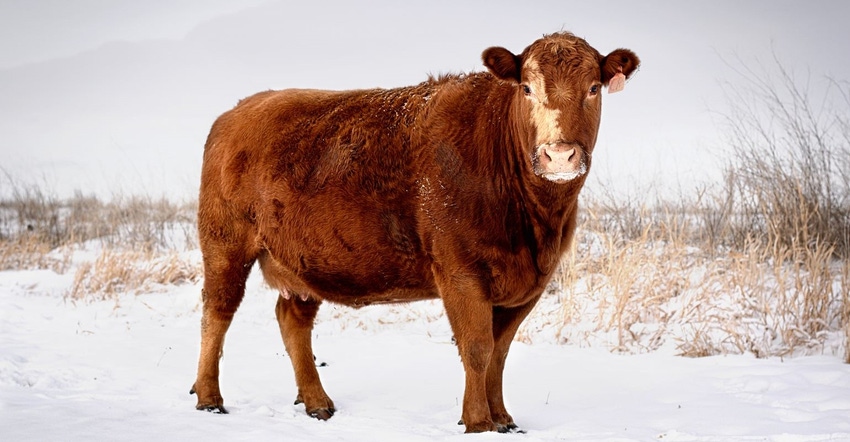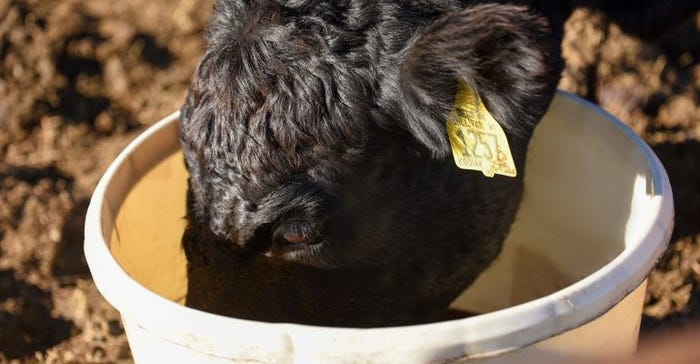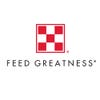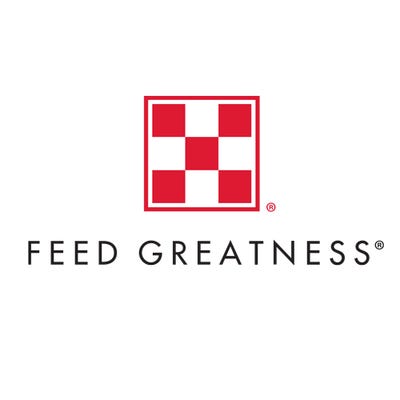The third trimester is the final stage for calf development, so cows need to be in prime condition prior to calving.
November 13, 2020

Sponsored Content
For many spring-calving herds, late-fall or early-winter marks the start of the third trimester and a significant upward shift in nutrient requirements. Coincidentally, it’s also when most available forage resources are lowest in quality. This creates a significant gap between nutrient needs and nutrient delivery during the final stage of calf development.
“Dam nutrition during these three months influences everything from how calving goes, calf vigor at birth, long-term calf performance and next season’s breeding success for the cow,” says Patrick Gunn, Ph.D., cattle consultant and nutritionist with Purina Animal Nutrition.

How dam nutrition impacts the calf
Cows channel 30% of their energy to support fetal growth and development during the third trimester. The fetus needs more nutrients from its dam than the previous two trimesters to fuel the final development of its organs, skeleton, lungs and immune system.
If calf requirements aren’t met in-utero, it can result in:
- Reduced birth weight and impaired growth
- Lower likelihood for the calf to reach its genetic potential
- Compromised immune system with a lifelong impact
- Long-term negative effects on fertility
- Setbacks to the dam’s reproductive efficiency
“The third trimester offers a unique opportunity to proactively invest in the future of your calf crop and replacement heifers,” says Gunn.

Fetal nutrition studies in Oklahoma and Nebraska demonstrate that calves born to cows with adequate levels of protein and energy in the diet during the third trimester have improved average daily gain and overall health. [1][2]
The Nebraska study compared the reproductive performance of heifers born to supplemented and non-supplemented cows while grazing corn stalks. Supplemented cows produced heifers with higher overall breeding season pregnancy rates (93%) compared to heifers from non-supplemented cows (80%).[3]
The bottom line? Whether the calf is destined for the feedlot or the cow herd, adequate dam nutrition is paramount for their future performance.
Meeting third trimester requirements
Calving is the main athletic event a cow fuels her body for. Prepare the cow and her growing fetus for a successful calving by focusing on the essentials – protein, energy, minerals and vitamins. And don��’t forget to factor in changing weather. The colder it gets, the more energy cows need to maintain core body temperature, diverting energy away from the growing calf.
“Enhance your cows’ nutrition with supplements that deliver additional energy and protein in a palatable package,” says Gunn. “Supplements should be designed to complement your existing forage resources, so cows only consume supplement when they need it.”
Year-round mineral supplementation is another great strategy to help meet third trimester requirements. Constant mineral access helps cows build up mineral and vitamin reserves. Cows can pull from those reserves during critical times, including the third trimester, to support nutrient needs without depleting their stores.
“The third trimester serves as the final sprint to the finish line – a time to dial in nutrition and not hold back,” says Gunn.
Are your cows ready for the cold months ahead? Understanding the lower critical temperature for cows can help you better manage and feed cattle this winter. Here’s how.
Like this content? Click here to get more timely expert advice like this delivered to your inbox.
[1] Range Beef Cow Symposium XXIII. 2013.
[2] Moriel, P., M.B. Piccolo, L.F.A. Artioli, R.S. Marques, M.H. Poore, and R.F. Cooke. 2016. Short-term energy restriction during late gestation of beef cows decreases postweaning calf humoral immune response to vaccination. J. Anim. Sci. 94. doi:10.2527/jas2016-0426.
[3] Funston, R.N., J.L. Martin, D.C. Adams, and D.M. Larson. 2010. Winter grazing system and supplementation of beef cows during late gestation influence heifer progeny. J. Anim. Sci. 88: 4094-4101
About the Author(s)
You May Also Like





